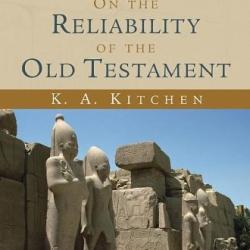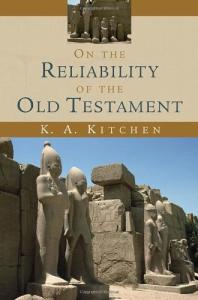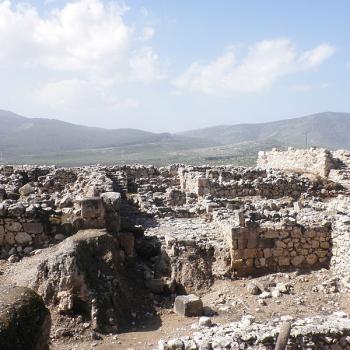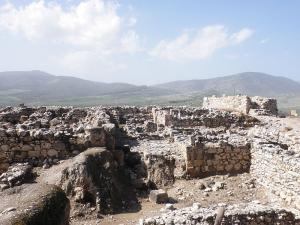Debunking Yet More of the Endless Pseudo-“Contradictions” Supposedly All Over the Bible
Bart Ehrman is one of the most well-known and influential critics of traditional Christianity and the inspired Bible (“anti-theists”) writing today. Formerly, in his own words, he was “a fundamentalist for maybe 6 years; a conservative evangelical but not extreme right wing for maybe 5 years more; and a fairly mainstream liberal Christian for about 25.” The primary reason he gives for having lost his faith is the problem of evil (a very serious topic I have dealt with many times). He stated on 3-18-22 in a comment on his blog: “I could no longer explain how there could be a God active in this world given all the pain and misery in it.” I don’t question his sincerity, good intentions, intellectual honesty, or his past status as a Christian; only various opinions which Christians must (in consistency) regard as erroneous.
Dr. Ehrman “received his PhD and MDiv from Princeton Theological Seminary, where he studied textual criticism of the Bible, development of the New Testament canon and New Testament apocrypha under Bruce Metzger.” He has written 30 books, which have sold over two million copies and have been translated into 27 languages.
Ehrman explains that the purpose of his blog is “to disseminate scholarly knowledge of the New Testament and the earliest periods of the Christian church to a non-scholarly audience, . . . Every post is rooted in scholarship – not just my own but that of thousands of scholars who have worked for centuries on understanding the historical Jesus, the New Testament, and the origins of Christianity.” Well, the conclusions of scholars are only as good as the solidity and truthfulness of the premises by which they are operating.
This is one of a series of reply-papers, in which I will address many of his materials from the perspective of archaeology, history, and exegesis.
*****
I am responding to his article, “Is the Book of Acts Historically Reliable? The Negative Case.” (3-30-16). His words will be in blue.
There are two major ways to check to see if Luke is historically accurate. The first is to see if he is internally consistent in his telling of his stories. If not, then that would show that he is not particularly concerned to get the facts straight. The second is to compare him with other reliable sources of the time to see if they coincide or not. As it turns out, a number of things that Luke says about Paul are things that Paul himself talks about, so we can compare the two. Whenever they talk about the same thing, they are at odds with one another. Luke does not appear to be historically accurate.
First, internal consistency. Luke sometimes tells the same story two or even three times. When he does so, there are striking contradictions, which show, among other things, that Luke is more interested in spinning a good yarn than he is in preserving a historically accurate narrative. Let me cite two examples. First, Jesus’ ascension. In Luke 24 (you can read it for yourself and see) Jesus rises from the dead, on that day meets with his disciples, and then, again that day, he ascends to heaven from the town of Bethany. But when you read Acts 1, written by the same author, you find that Jesus did not ascend on that day or at that place. Jesus instead spends forty days with his disciples proving to them that he had been raised from the dead (it’s not clear why he would have to prove it! Let alone do so for forty days!); and only then — forty days after the resurrection– does he ascend.
I’ve already refuted this objection in answering another atheist who argued in the same way: Seidensticker Folly #15: Jesus’ Ascension: One or 40 Days? (9-10-18). Summary: Luke in his Gospel was using the well-known literary technique of compression, or telescoping; i.e., condensing or abridging the story and leaving out details in a way which may lead some (not familiar with the technique) to erroneously believe that it all happened on one day. But this methodology was unquestionably used by ancient writers such as Josephus, Plutarch, Cicero, and Quintillian. It was described by Lucian of Samosata (c. 125 AD-after 180 AD), a Syrian rhetorician, in his treatise, How to Write History.
Ehrman himself recognized that the Gospel writers sometimes use the technique, since he wrote about Matthew’s account of the raising of Jairus’ daughter: “Matthew . . . has telescoped the story to make it much briefer” (4-22-19). He claimed that in doing so, Matthew introduced contradictions (what else?!), but nevertheless he still acknowledged that there was such a literary technique and that Matthew used it. Therefore, he can’t rule out at least the possibility that Luke also did in our present case. In other words, our reply is not mere rationalization. It’s plausible and it has demonstrable historical background.
And here he ascends not from Bethany but from Jerusalem. Luke tells the same story twice, and in two radically different ways. Historical accuracy does not appear to be his major concern.
I would say that accuracy in reporting what the Bible stated in the first place seems not to be Ehrman’s “major concern.” Here are the two passages:
Luke 24:50-52 (RSV) Then he led them out as far as Bethany, and lifting up his hands he blessed them. [51] While he blessed them, he parted from them, and was carried up into heaven. [52] And they returned to Jerusalem with great joy,
Acts 1:9-12 . . . as they were looking on, he was lifted up, and a cloud took him out of their sight. [10] And while they were gazing into heaven as he went, behold, two men stood by them in white robes, [11] and said, “Men of Galilee, why do you stand looking into heaven? This Jesus, who was taken up from you into heaven, will come in the same way as you saw him go into heaven.” [12] Then they returned to Jerusalem from the mount called Olivet, which is near Jerusalem, a sabbath day’s journey away;
There simply is no contradiction here. In Luke 24, the text implies that Jesus ascended from Bethany, and that they “returned to Jerusalem” afterwards. In Acts 1, they also “returned to Jerusalem” (therefore the Ascension didn’t take place in Jerusalem!) after the Ascension took place on “the mount called Olivet, which is near Jerusalem.” Where’s the contradiction? Wikipedia (“Mount of Olives”) explains that “On the south-eastern slope of the Mount of Olives lies the Palestinian Arab village of al-Eizariya, identified with the ancient village of Bethany mentioned in the New Testament . . .” Likewise, John 11:18 states: “Bethany was near Jerusalem, about two miles off,”.
Neither text asserts that Jesus ascended to heaven from Jerusalem. He did so from the Mount of Olives, which Acts rightly distinguishes as separate from Jerusalem (as it was in the first century), while Luke mentions Bethany, which lies on the Mount of Olives. So it turns out that Ehrman (not the eminent historian Luke) is sloppy in his history, Bible reading, . . . and (if I do say so) the geography of first-century Israel.
Second example. On three occasions Acts narrates the conversion of Paul on the road to Damascus, chapters 9, 22, and 26. Compare them closely to one another, and you find very odd contradictions. In chapter 9 Paul’s companions hear the voice of Jesus talking to Paul, but they don’t see anyone; in chapter 22 they see the light but don’t hear anything. Which is it? In Chapter 9 the companions are left standing while Paul falls to the ground; in chapter 26 they are all knocked to the ground. Which is it?
Acts 9:3-7 Now as he journeyed he approached Damascus, and suddenly a light from heaven flashed about him. [4] And he fell to the ground and heard a voice saying to him, “Saul, Saul, why do you persecute me?” [5] And he said, “Who are you, Lord?” And he said, “I am Jesus, whom you are persecuting; [6] but rise and enter the city, and you will be told what you are to do.” [7] The men who were traveling with him stood speechless, hearing the voice but seeing no one.
Acts 22:6-9 “As I made my journey and drew near to Damascus, about noon a great light from heaven suddenly shone about me. [7] And I fell to the ground and heard a voice saying to me, ‘Saul, Saul, why do you persecute me?’ [8] And I answered, ‘Who are you, Lord?’ And he said to me, ‘I am Jesus of Nazareth whom you are persecuting.’ [9] Now those who were with me saw the light but did not hear the voice of the one who was speaking to me.”
Acts 26:14 And when we had all fallen to the ground, I heard a voice saying to me in the Hebrew language, `Saul, Saul, why do you persecute me? It hurts you to kick against the goads.’
The Catholic Encyclopedia (“Acts of the Apostles”) disposed of this objection way back in 1907:
It is urged that the three accounts of the conversion of St. Paul . . . do not agree. . . . There are many solutions of this difficulty. . . . Pape and others give to the eistekeisan the sense of an emphatic einai, and thus it could be rendered: “The men that journeyed with him became speechless”, thus agreeing with 26:14. Moreover, the three accounts can be placed in agreement by supposing that the several accounts contemplate the event at different moments of its course. All saw a great light; all heard a sound from Heaven. They fell on their faces in fear; and then, arising, stood still and speechless, while Paul conversed with Jesus, whose articulate voice he alone heard. In Acts 9:7, the marginal reading of the Revised Edition of Oxford should be accepted: “hearing the sound”. The Greek is akoyontes tes phones. When the writer speaks of the articulate voice of Christ, which Paul alone heard, he employs the phrase outer phrase, ekousan phonen. Thus the same term, phone, by a different grammatical construction, may signify the inarticulate sound of the voice which all heard and the articulate voice which Paul alone heard.
In chapters 9 and 22 Paul is told to go to Damascus to be instructed by a man named Ananias about what to do next. In chapter 26 Paul is not told to go be instructed by Ananias, instead Jesus himself instructs him. Well, which is it?
Acts 9:10-12 Now there was a disciple at Damascus named Anani’as. The Lord said to him in a vision, “Anani’as.” And he said, “Here I am, Lord.” [11] And the Lord said to him, “Rise and go to the street called Straight, and inquire in the house of Judas for a man of Tarsus named Saul; for behold, he is praying, [12] and he has seen a man named Anani’as come in and lay his hands on him so that he might regain his sight.” . . .
Acts 22:10 And I said, `What shall I do, Lord?’ And the Lord said to me, `Rise, and go into Damascus, and there you will be told all that is appointed for you to do.’
Acts 26:15-18 And I said, `Who are you, Lord?’ And the Lord said, `I am Jesus whom you are persecuting. [16] But rise and stand upon your feet; for I have appeared to you for this purpose, to appoint you to serve and bear witness to the things in which you have seen me and to those in which I will appear to you, [17] delivering you from the people and from the Gentiles — to whom I send you [18] to open their eyes, that they may turn from darkness to light and from the power of Satan to God, that they may receive forgiveness of sins and a place among those who are sanctified by faith in me.’
Much ado about nothing, again, as we see by simply reading the texts and applying logic (and not being hostile to and suspicious the texts without reason from the outset).
1) Acts 9: Paul learns (in a vision) that some stranger named Ananias would help him regain his sight after his dramatic conversion experience.
2) Acts 22: Paul is told to go to Damascus to be instructed, then he recounts how Ananias instructs and exhorts him.
3) Acts 26: Paul recalls some things that Jesus told him (having to do with his future mission) at the time of his conversion.
Ehrman first misrepresents the stories of Acts 9 and 22 (I don’t say deliberately, but he should know better, being a NT scholar). It’s just plain sloppy analysis. Acts 9 says nothing about Paul being “told to go to Damascus to be instructed by a man named Ananias.” He simply saw a man identified as Ananias in a vision, who would, in effect, heal his temporary blindness. Nothing is here about either being sent to Damascus or being instructed by Ananias. The text talks about how Ananias was told by God in a vision to go visit Paul, but even so, it mentions nothing about “instruction.” So why does Ehrman project all these things onto the text that aren’t there? Who knows why?
In Acts 22 Paul is indeed told by God to go to Damascus and that he would be instructed. But God didn’t tell him that Ananias would do so. So Ehrman presents the two texts in an inaccurate way. They don’t contradict each other, though. The information is complementary and internally consistent. Ehrman then tries to make out that Acts 26 contradicts 9 and 22, simply because in that account, Paul recalled how Jesus had directly instructed him. But so what? Where is the supposed contradiction?
The texts taken together never assert that “only Ananias would instruct him” or “only God would instruct him.” If that had been the case, it would have been contradictory. They teach us that he was instructed by both. The more the merrier! First God did, and then Ananias affirmed that God was so speaking (to help Paul avoid being skeptical of his vision), with the evidence of a miracle to establish his own “credentials” as a man verifying what God had said.
Why do we have to choose between these things (“which is it?”), as if they can’t supposedly all exist together? We don’t! They exist in harmony and do not logically contradict. If Bart Ehrman disagrees, I suggest he revisit and refresh his memory as to what he learned in his logic class (if he ever took one), or read a book about logic now if he didn’t take the course in college. I’m not trying to be insulting (really, I’m not). We all have to learn how to think logically, and even when we do so, we can all fall into being so biased that we fail to correctly apply logic to a particular matter. Every textbook on logic provides examples of great thinkers falling into the trap of logical fallacies. If a person wishes to make serious charges against portions of the Bible, in terms of alleged contradictions, then he or she better have their “logical ducks” in a row.
All these examples simply show that Luke was far more interested in telling a gripping story than he was in being consistent. His artistic license has seriously undercut his historical accuracy.
They show no such thing, because — as I have now demonstrated — Ehrman’s charges all fall flat under intense scrutiny. Luke’s historical accuracy is demonstrated by being backed up by external archaeology and historiography at least fifty times.
But even more noteworthy are the external contradictions with a reliable source: Paul himself. Whenever Acts relates an incident from Paul’s life that Paul himself discusses, there are striking and irreconcilable differences. Sometimes these involve small details. For example, Acts 17 is clear and unambiguous: when Paul traveled to bring the gospel to Athens, he came by himself, without Timothy or any of the other apostles But Paul himself is also clear and unambiguous; in 1 Thessalonians 3 we learn that he came to Athens precisely in the company of Timothy, not by himself. It couldn’t be both.
Acts 17:14-17 Then the brethren immediately sent Paul off on his way to the sea, but Silas and Timothy remained there. [15] Those who conducted Paul brought him as far as Athens; and receiving a command for Silas and Timothy to come to him as soon as possible, they departed. [16] Now while Paul was waiting for them at Athens, his spirit was provoked within him as he saw that the city was full of idols. [17] So he argued in the synagogue with the Jews and the devout persons, and in the market place every day with those who chanced to be there.
1 Thessalonians 3:1-2 Therefore when we could bear it no longer, we were willing to be left behind at Athens alone, [2] and we sent Timothy, our brother and God’s servant in the gospel of Christ, to establish you in your faith and to exhort you,
This is yet another non sequitur and non-contradiction. Let me explain how and why it isn’t. Paul came by himself to Athens, and gave instructions to the sailors who brought him there to inform Silas and Timothy (presumably through some sort of mail, or by going back to where they were) to meet him in Athens “as soon as possible.”
1 Thessalonians, contrary to Ehrman’s skeptical “gotcha!” claim, did not assert that Paul “came to Athens precisely in the company of Timothy.” It says nothing at all about who went there with him. It simply says that Paul was writing to the Thessalonians, about whom he was concerned (2:17-18), because of their suffering (2:13-14). So he sent Timothy (who was at this time with him) to exhort and comfort the Thessalonians, to be able to withstand the “afflictions” that are the “lot” of Christians (3:2-7). We know Timothy was eventually with him in Athens, but we don’t know from this text that he went there with him. That comes solely from Bart Ehrman’s zealous and overactive imagination.
Paul had asked that Timothy and Silas come as soon as possible. So Timothy eventually arrived (perhaps Silas couldn’t make it for some reason), and Paul sent him off to comfort other suffering Christians. In an earlier article (9-4-13), Ehrman added another equally false claim of alleged biblical contradiction, contending that “the book of Acts states that when Paul went to Athens, he left Timothy and Silas behind in Berea (Acts 17:10-15) and did not meet up with them again until after he left Athens and arrived in Corinth (18:5). . . . It’s a minor detail. But it serves to show something about the historical reliability of Acts . . .”
Actually, the book of Acts doesn’t deny that Paul met with Timothy and Silas between the time they all were in Berea and another later time when all were in Corinth. That comes from Ehrman’s fertile imagination only, and can’t be positively proven from the information we have in the Bible. Acts simply says that “Silas and Timothy arrived [in Corinth] from Macedo’nia” (18:5). Since it says absolutely nothing about the in-between time in Athens (neither affirming nor denying either Timothy or Silas’ presence there), it’s perfectly consistent, logically, for Paul to say in 1 Thessalonians that Timothy was with him part of the time (not from the beginning), before he sent him away on a mission.
So it looks like (but isn’t certain) that Silas never made it to Athens during Paul’s stay. Then in Acts 18: he arrives in Corinth from Macedonia, which makes perfect sense, seeing that Berea (where he was last mentioned as being) is in Macedonia. This is more evidence that he never left Macedonia previously (for whatever reason) to go to Athens and evangelize with Paul. So Ehrman is correct about Silas, but not about Timothy. He was sent by Paul from Athens to Thessalonica, and now he is said to be traveling to Corinth to meet Paul from Macedonia. Yep: this is perfectly reasonable, too, since Thessalonica is also one region of Macedonia. So it all fits perfectly together with no contradiction. Foiled again!
I reiterate: where’s the contradiction? There “is” one if a person sets up a straw man that can’t be demonstrated in the text itself. This is what Ehrman has done. Shame on him making such an intellectually sloppy and groundless argument and passing it off in public as if it were a “biblical contradiction.”
In another post attacking Acts and Luke (9-5-13), Ehrman pontificates:
We could deal forever with the question of the historical accuracy of Acts. There are entire books devoted to the problem and even to *aspects* of the problem, and different scholars come to different conclusions. My own view is that since Acts is at odds with Paul just about every time they talk about the same thing, that it is probably not to be taken as very accurate, especially in its detail.
Yes we could, (I for one would be delighted to do more of this), and I highly suspect that Ehrman’s arguments will be just as weak, flimsy, and fallacious as all of them refuted in this article were. He’s come up with a big zero so far; therefore, his triumphalistic attack on Acts falls on deaf ears. He has proven no such thing. If his loyal followers think he has, then I say they need to take a refresher course in logic along with Bart.
Sometimes the differences really matter. When Paul himself talks about his conversion in Galatians 1 he insists that after he had his vision of Jesus he did not – he absolutely and positively did not (he swears to it!) – go to confer with the other apostles in Jerusalem. Not for years. And what happens when Paul converts according to Acts 9? What is the first thing he does after he leaves Damascus? He makes a bee-line to Jerusalem to confer with the other apostles. In Acts he does precisely what he himself swears he didn’t do.
This is clearly another instance of compression, or telescoping. Luke employs it in Acts 9, which is his narrative of Paul’s conversion and his meeting the apostles: just as he did in his Gospel, chapter 24, and Paul does not in Galatians 1. But in Acts 22:17, Paul himself uses the same technique of compression, during his trial. He recounts his conversion, then (desiring to condense the story for whatever reason) skips right over the three years in Arabia at Acts 22:17 and starts talking about being in Jerusalem and the initial skepticism that he had converted, after persecuting Christians. So Paul does it one place and not in another (which is perfectly fine). This is how ancient literature works. And no doubt there are analogous examples in our time as well.
Even more striking than the contradictions in the itinerary and travels of Paul are the discrepancies in his preaching. Here I give just one example. In Acts 17 when Paul is preaching to the pagans of Athens, he tells them that they worship idols out of ignorance. They simply don’t know any better. And because of that, God overlooks their mistake; but he now gives them a chance to recognize the truth and worship him alone.
Exactly. Here, Ehrman actually (to his great credit) portrays what is in the text, instead of warring against a straw man that isn’t in the text. But it doesn’t last for long! In Athens, Paul noted and praised the Athenians worship of a “god”: albeit an “unknown” one. So it’s not a question of denying God’s existence altogether, but rather, of worship that lacks particulars as to the nature and identity of the one they are worshiping. Paul then used the opportunity of their lack of knowledge and simultaneous sincere and pious religiosity, to proclaim the gospel of Jesus Christ and the nature of the one true God. He uses what they know and builds upon it, up to and including the Christian message.
That stands in sharp contrast with the views that Paul himself lays out in his letter to the Romans. In chapter one Paul states his views of pagan idolatry and false worship, and they are completely contrary to what he allegedly said in Acts 17. In Romans Paul tells us that pagans worship idols precisely because they did know that there was only one God who was to be worshiped, and they rejected that knowledge in full consciousness of what they were doing. And because of that God has cast his wrath down upon them. Well which is it? Do they commit idolatry out of pure ignorance so God overlooks their mistake? Or are they fully aware of what they’re doing so God judges them? Assuming Paul himself knew what his own views were, you would have to say that Acts has misrepresented the very core of his preaching message.
It’s apples and oranges and another non-contradiction. In Acts 17 in Athens, Paul is addressing a situation where the Athenians had an “altar” with the inscription, “To an unknown god” whom they worshiped (17:23). This he perceived as their being pious and “very religious” (17:22). That’s not atheism: not a deliberate rejection of any god or God (nor even agnosticism), but ignorant religiosity; religion minus knowledge and particulars. Paul in effect praises it and expressly categorizes it as “ignorance” that “God overlooked” (17:30).
In Romans 1 he is addressing something utterly different than that: “men who by their wickedness suppress the truth” (1:18); people who “knew God” but “did not honor him as God or give thanks to him” (1:21) and “did not see fit to acknowledge God” (1:28). This is a vastly different approach from the Athenians (or at least those who worshiped the “unknown god”). Paul isn’t addressing all pagans whatever, but specifically, people with these characteristics.
Having stated this, he goes right into a very ecumenical, welcoming message in the next chapter (and the original New Testament didn’t contain chapters): one of possible salvation for all human beings (“glory and honor and peace for every one who does good, the Jew first and also the Greek. For God shows no partiality.”: 2:10-11). He teaches that abiding by a good conscience could very well bring salvation to anyone: Jew or Gentile alike (2:14-16). Obviously, then, he is not condemning all pagans and non-Jews with the wave of a hand. In Romans 1 he specifically condemned those who know there is a God and who deliberately reject Him, knowing that He exists.
So, as usual, no contradiction exists here, either. Ehrman simply failed to closely read the text and draw the proper distinctions. I suggest that he read much more carefully, and not be consumed by his excessive skeptical zeal.
Every time you compare what Acts has to say about Paul with what Paul has to say about himself, you find discrepancies. Just as you find discrepancies internally, whenever Acts recounts the same event more than once. As valuable as Acts may be as an interesting story about the first years and decades of the early Christian movement, the reality is that the book of Acts is not historically reliable.
That’s his claim. However, upon close examination, none of the examples he provided prove what he is trying to say: that Luke is contradictory and unreliable. Therefore, since I have done my own research and have presented fifty instances where he was reliable, based on archaeology (which is objective science and not arbitrary subjective fluff), and since these contradictions have not been proven (which is putting it mildly), I stand by Luke as a reliable historian.
***
Ehrman’s “reply” in his combox:
Paul doesn’t join up with Timothy until later in Acts, not while he is still in Athens.
My counter-reply:
As I already noted, Paul stated that Timothy was eventually with him in Athens, because he sent him somewhere else:
1 Thessalonians 3:1-2 (RSV) Therefore when we could bear it no longer, we were willing to be left behind at Athens alone, [2] and we sent Timothy, our brother and God’s servant in the gospel of Christ, to establish you in your faith and to exhort you,
***
Practical Matters: Perhaps some of my 4,000+ free online articles (the most comprehensive “one-stop” Catholic apologetics site) or fifty books have helped you (by God’s grace) to decide to become Catholic or to return to the Church, or better understand some doctrines and why we believe them.
Or you may believe my work is worthy to support for the purpose of apologetics and evangelism in general. If so, please seriously consider a much-needed financial contribution. I’m always in need of more funds: especially monthly support. “The laborer is worthy of his wages” (1 Tim 5:18, NKJV). 1 December 2021 was my 20th anniversary as a full-time Catholic apologist, and February 2022 marked the 25th anniversary of my blog.
PayPal donations are the easiest: just send to my email address: [email protected]. You’ll see the term “Catholic Used Book Service”, which is my old side-business. To learn about the different methods of contributing, including 100% tax deduction, etc., see my page: About Catholic Apologist Dave Armstrong / Donation Information. Thanks a million from the bottom of my heart!
***
Photo credit: St. Paul (c. 1611), by Peter Paul Rubens (1577-1640) [public domain / Wikimedia Commons]
***
Summary: Agnostic Bible skeptic Bart Ehrman writes about “Luke the unreliable historian” by suggesting self-contradictions that don’t in fact exist upon a closer look.




















